
When you start taking care of yourself, you start feeling better, looking better and even attracting better. This can be achieved through a balanced routine.
The day begins early and ends early. We should be up between 5 and 5.30 am and get the first rays of the sun. Begin the day with a prayer for having another great day and being alive. Next comes physical activity. It has been proven that exercise releases the chemical – endorphin. It is one of the DOSE- Dopamine, Oxytocin, Serotonin, Endorphin which helps us to have a clear and calm mind for the day. Meditation and breathing exercises cleanse our body from inside. We follow this up with hygienic fresh food. Oats, eggs, vegetables and fruits must be included. Remember you are what you eat.
We should work a minimum of 7 to 8 hours a day which can be school for students, office for adults, projects for artists etc. It is the requirement for surviving in the world. 3 to 5 hours should be spent by students on self study,depending on their class level -revising,completing assignments and exploring beyond homework.
We can spend 1 to 1.5 hours on mobile, television, social media etc. It shouldn’t be at a stretch of 1.5 hours but divided throughout the day. Like after 2 hours of work or study we can use the mobile for 15 minutes. The most important of all is to read a book for at least 30 minutes before bed for self development. The following 15 minute, plan for the next day. This helps not only students but even the adults as they have a clear cut idea of what they need to be prepared for the next day. It’s not making a time table but meeting deadlines for the tasks we need to accomplish the next day.
End the day with meditation to relax entirely. All day we were in a beta state of mind which is competitive and survival oriented . Meditation helps one to attain an alpha state which is the relaxed state of mind. When we lie down and close our eyes, recollect the day, recall what we have done and feel grateful for people who helped us, apologize if we have hurt anyone and finally feel content that we are a better person now than at the beginning of the day.
When we are about to sleep, we inhale and tell ourselves ‘I am not the body’, exhale and tell ourselves ‘I am not even the mind’. Inhale,’ I am not the body’, exhale, ‘I am not even the mind’. Repeat this until we fall asleep. This reduces our sleep quota as our meta physical entity gets relaxed by this process.
This makes us ready for one more wonderful tomorrow to jump out of the bed and achieve our dreams. This universe is vast and at present we are only the conscious beings on the Earth. We need to make this life worthwhile.
Let us find our purpose, work hard but enjoy life too and leave for the generation.
FINALLY BE AN EAGLE THAT FLY ABOVE THE CLOUDS WHEN EVERYONE ELSE IS FIGHTING FOR SHELTER DURING RAIN.
- Krishna Kishore, XII
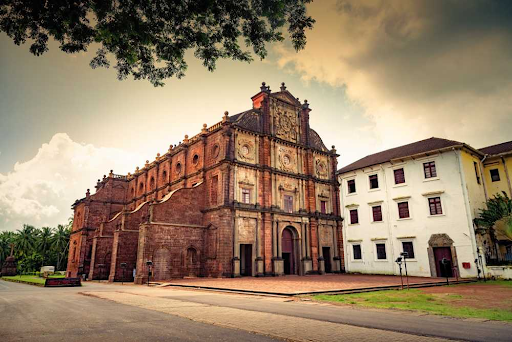
The churches and convents of Goa, the former capital of Portuguese Indies - particularly the church of Bom Jesus,which contains the tomb of St. Fransis-Xavier illustrate the evangelization of Asia.
It is located on the west coast of India about 10km east of the state capital Panaji.
The monument represents the roots of a unique Indo-Portuguese style that developed during Portuguese control of the territory, which lasted for 450 years until 1961. This period deeply influenced the way of life as well as architectural style of the place, which spread to mission beyond Goa, creating a unique fusion of Western and Eastern traditions.
The discovery of the relics of St. Ketevan of Georgia during an excavation , adds to the value of the Church within the St. Augustin complex.
The ‘city of caves’, situated on the Elephanta island, in Maharashtra contains a collection of rock art linked to god Shiva. It features two hillocks separated by a narrow valley. These archeological remains reveal evidence of occupation from as early as the 2nd century BC.
The most important among the Caves is the great cave 1, which measures 39 meters from the front entrance to the leach. The cave in the western hill closely resembles Dumor Lena cave at Ellora. The main body of the cave, excluding the portico on the three open sides and the back aisle, is 27 meters square and is supported by rows of six columns each.
The caves need to be protected because they contain rock cut stone sculptures, mostly in high relief, that show syncretism of Hindu and Buddhist ideas and iconography.
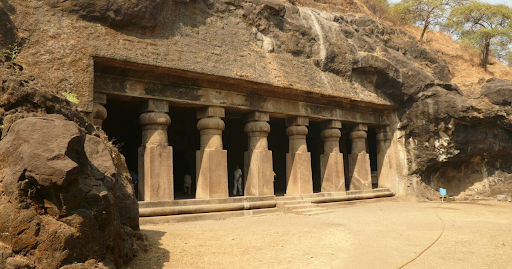
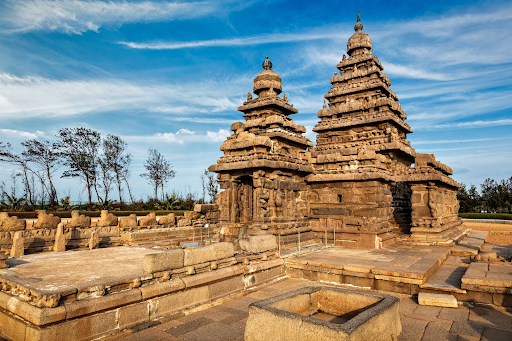
Mahabalipuram or Mamallapuram in the state of Tamil Nadu is famous for its collection of monuments carved out of rocks. It is a site of different categories of monuments like The rathas, mandapas, giant open-air reliefs such as the famous ‘Descent of the Ganges’ and the temple of Rivage and stone cut temples with thousands of sculptures to the glory of Shiva.
Mahabalipuram, located along southeastern India’s Coromandel coast, was a celebrated Port of the city of the Pallavas.
The rock shelters of Bhimbetka are located on the southern edge of the central Indian Plateau located in Madhya Pradesh. Within massive sandstone outcrops, above comparatively dense forest, are five clusters of natural rock shelters, displaying paintings that appear to date from the Mesolithic period right through to the historical period.
Bhimbetka reflects a long interaction between people and the landscape, as demonstrated in the quantity and quality of its rock art. It is closely associated with a hunting and gathering economy as demonstrated in the rock art and in the relics of these traditions in the local adivasi villages on the periphery of this site.
The Bhimbetka site has the oldest-known rock art in India, as well as is one of the largest prehistoric complexes. 550 million years old dickinsonia fossils of extinct genus of basal animals has been found at Bhimbetka. Hence, it needs to be protected as one of the world heritage monuments.
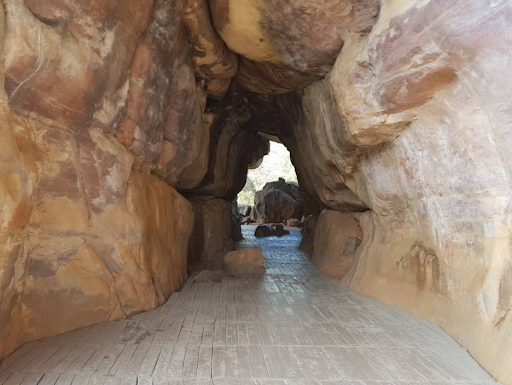
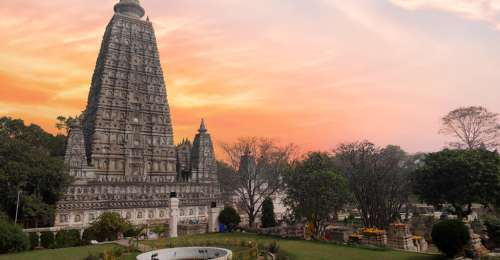
The Mahabodhi temple complex is a holy site related to the life of the lord Budda , and particularly to the attainment of enlightenment. It is one of the earliest Buddist temples built entirely in brick, still standing in India, from the late Gupta period.
The Mahabodhi temple complex, Bodh Gaya lies 115 km south of the state capital of Bihar, Patna and 16 km from the district headquarters at Gaya, in Eastern India.
In the context of philosophical and cultural history, Mahabodhi temple complex is of great relevance as it marks the most important event in the life of Lord Buddha, the monument when Prince Siddhartha attained enlightenment and became Buddha, an event that shaped human thought and belief.
- Amrutha Lukka, XII
A people without the knowledge of their past history, origin, and culture is like a tree without roots—Marcus Garvey
World Heritage Day is commonly known as the International day for monuments and sites, which is celebrated on 18th April every year. Ancient monuments and sites describe the past culture and heritage of a place that need to be conserved. In an effort of conservation, International Council on Monuments and Sites (ICOMOS) proposed World Heritage Day on 18 April 1982.
Monuments are always the first attraction of a country. Monuments are not only the invaluable symbols of our past civilization, but also a very rich source of earnings for the local as well as national economy. Monuments are major tourist attractions and it provides thousands of job opportunities..
The monuments protect ecosystems vulnerable to climate change, store atmospheric carbon in dense forests, and, in some cases, serve as sources of water for nearby communities.
It is important to conserve, preserve & protect these monuments from Pollution, Poor civic sense of local citizens, Water seepage from farming, Civil wars, terrorist attacks & vandalism, Natural weathering.
Set up grievances cell: There should be a grievance cell for a particular monument to attend the complaints of visitors and solve them for better tourism.
Maintaining pollution less surrounding: In order to protect monuments from pollution, factories should not be built in the nearby radius. Limiting vehicle traffic near monuments can also help reduce the pollution to a great extent.
Adopt monuments: Government through schemes can preserve such sites by inviting public sector companies, private sector companies, NGOs, and corporate citizens or individuals to adopt and take up responsibility with government in helping to tackle the obstacles faced in development of tourism.
Launch cleanliness drives: Participation and encouraging community for joining cleanliness drives near monuments.
Awareness: Meetings, surveys, reports, heritage clubs should be set up by schools, educational institutes to make students and youth aware of the need to save monuments. Awareness campaign to educate the community about importance of monuments, how can avoiding poor civic sense like scratching, spitting on monuments help in preserving our complex past and diverse futures, ways of conserving historical sites would be of help.
- Divya Suthar, XI
1857-1947 : The period of Indian freedom struggle. Various leaders sacrificed their lives for our country. All they wanted was a free India. They wanted the people to live their lives with freedom, which was to act or speak or think without being by any restrictions.
Now, we are living in 2022, in a free country but still everyone longs for freedom.
What then is true freedom.
Everyone of us might have heard the word ‘freedom’ but if you ask its meaning you will get various answers from different people. For some it is being responsible and duty free, for some it is doing whatever and whenever you want. Freedom is not what we think it is. It is a concept which everyone interprets in their own way.
Freedom is a consequence, it is not a thing that you do. Freedom is not an act, it is a consequence on how you experience your life. Freedom comes out of a responsible existence. Responsibility doesn't mean civic responsibility. If you continue to respond to your life without any misconceptions and restrictions you will see that you will become free.
For example,
If you want to grow plants in your garden you will have to think about soil, water, manure and sunlight. If you take care of these things, plants will automatically grow. If you are devoted to the process you are doing right now you will naturally get your result.
Similarly,if you want to be truly free, you don't have to think about freedom. All you need to do is to do your duties, as a student if we follow a balanced routine with responsibility, we will get our freedom. Because freedom is not an act, it is a consequence that comes out of a responsibility. So start being responsible and take care of small things and big things will follow.
- Lakshmi Priya, XI